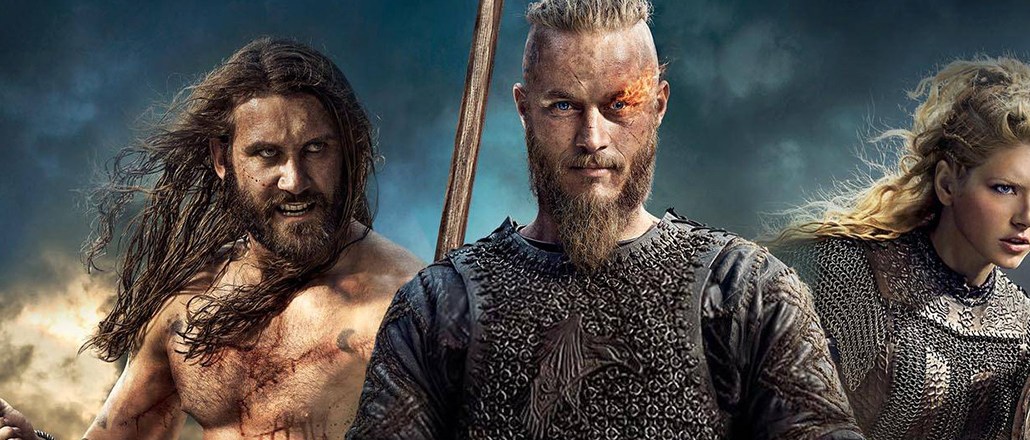
If YouTube is a tsunami of video content, the newly launched Vessel aims to be a stream, filtering out the sludge and letting only the top short-form video content flow out to its audience. It’s a stream in which A+E Networks wants to take a dip.
A+E Networks has signed a multi-year deal with online video startup Vessel, which launched to the public on Tuesday, A+E Networks’ Dan Suratt told Digiday on Wednesday. A+E will provide select short-form videos to Vessel before other digital platforms, agreeing to three days of exclusivity before that content appears elsewhere. In exchange, A+E received a “very favorable revenue split compared to other [platforms] in the industry,” said Suratt, evp of digital media and business development at A+E Networks.
“For us, there has been no destination for curated, short-form video that has been meaningful,” he said. With Vessel, “we really saw the opportunity for not just posting a video and hoping people find it but for having a curated experience where they editorialize and promote what they think is good.”
 Headed up by former Hulu chief Jason Kilar, Vessel has created a more exclusive video-streaming platform than YouTube, catering to creators and media brands disenchanted by YouTube’s strict revenue-sharing agreements and lax approach to content promotion. With $75 million in pre-launch venture capital, Vessel has recruited A+E Networks, Discovery Digital Networks and other media companies and YouTubers with upfront guaranteed payments in exchange for exclusivity. Those payments are derived from metrics on YouTube and other platforms, including viewership, engagement, audience retention and subscriber totals, according to an executive working with Vessel at a top multichannel network.
Headed up by former Hulu chief Jason Kilar, Vessel has created a more exclusive video-streaming platform than YouTube, catering to creators and media brands disenchanted by YouTube’s strict revenue-sharing agreements and lax approach to content promotion. With $75 million in pre-launch venture capital, Vessel has recruited A+E Networks, Discovery Digital Networks and other media companies and YouTubers with upfront guaranteed payments in exchange for exclusivity. Those payments are derived from metrics on YouTube and other platforms, including viewership, engagement, audience retention and subscriber totals, according to an executive working with Vessel at a top multichannel network.
“Vessel is doing those upfront payments on their own risk, so there’s not a risk on [A+E’s] end,” said the executive.
Vessel offers a free tier as well as a paid tier, which costs $3 a month and offers early access to videos from participating media brands and creators. But Vessel has signed up a number of prominent media companies who want to distribute their videos through the platform without any exclusivity, including NBCUniversal, the NBA, Time Inc, BuzzFeed and The New York Times. A+E is the only television network currently offering Vessel exclusivity on any of its TV content.
The subscription offering also features a lighter advertising load. Vessel declined to provide user numbers since its Tuesday launch, but the company gave away one-year subscriptions to people who downloaded the app within the first 72 hours of release in an effort to build up its initial user base. It has an impressive roster of initial advertisers, including Jaguar, Land Rover, Chevy, McDonald’s, Corona, as well as eye-catching ad units the startup calls “motion posters.” But those ad deals will dry up fast if Vessel fails to build a substantial audience.
“That’s why they’re going after the [YouTube] influencers, because they’re the ones that are going to bring the audience,” said the multichannel network exec. “Vessel really needs to show traction and go and sell their [advertising] inventory. They wouldn’t share how much commitment they already have from advertisers.”
A+E Networks operates 10 television channels, including A&E, History and Lifetime. It has a small team that focuses on short-form content, paring down television shows like “Vikings” and “Dance Moms” into clips and producing some original content, such as recaps and behind-the-scenes material. It shares that content through its own sites and apps, its cable and satellite video programming partners, and digital platforms like YouTube, Facebook, Hulu and AOL. Now, Vessel will take a front seat, demonstrating the frustration A&E and other media brands have with YouTube’s democratic approach to content.
“Throwing more water into the sea is not a great way to get your content viewed. It just ends up being one of a billion clips uploaded on that day that don’t necessarily ever get seen,” said Suratt. “The content that we and other premium publishers are making is at a different level than the large majority of what’s being posted. And right now, there’s no differentiation between those two.”
More in Media

Publishers revamp their newsletter offerings to engage audiences amid threat of AI and declining referral traffic
Publishers like Axios, Eater, the Guardian, theSkimm and Snopes are either growing or revamping their newsletter offerings to engage audiences as a wave of generative AI advancements increases the need for original content and referral traffic declines push publishers to find alternative ways to reach readers.

The Guardian US is starting its pursuit of political ad dollars
The Guardian US is entering the race for political ad dollars.

How much is Possible’s future in Michael Kassan’s hands?
Some people in the know at Possible said they see the conference taking a bite out of Cannes’ attendance, most acutely by U.S.-based marketers who could save money by staying on this side of the Atlantic.





